Flash VS Natural Light Photography
The Importance of Lighting in Photography
Without a shadow of a doubt, lighting reigns supreme as the most crucial element in the art of photography. It wields the power to set the tone, evoke emotions and accentuate the essence of the subject captured. You see, no matter how meticulously we compose a shot, how masterful our technical skills are or how captivating our subject is, if the lighting falters, the entire composition may suffer a setback.
Hence, we find ourselves facing the dichotomy of two lighting techniques, each with its distinct advantages and limitations. First, we have the exquisite natural light, gifted to us by the radiant sun. Its gentle touch imbues our photographs with unparalleled softness, warmth and emotional depth that leaves viewers mesmerised.
On the other hand, flash photography enters the arena, unleashing controlled bursts of light that defy darkness and create compelling images even in challenging conditions. When the ambient light dims, flash rises to the occasion, like a beacon in the night, illuminating scenes with precision and clarity.
In the course of this discourse, we shall embark on an exploration of these two luminous contenders. I shall elucidate their respective merits, discuss their optimal applications and shed light on the artistry involved in utilising them effectively. Together, we shall journey through the realms of natural light and flash photography, arming ourselves with the knowledge and understanding to wield light as a masterful tool in our photographic endeavours. Let us begin this enlightening odyssey!
Natural Light Photography
In the captivating world of photography, the source of true magic lies in natural light, bestowed upon us by the sun. Unlike interior lighting, such as ceiling lights, which people sometimes mistake for natural light, the sun's gentle illumination casts a soft and warm glow, capturing the genuine essence of our subjects.
With a little knowledge and appreciation for the nuances of natural light, we can create stunning portraits that evoke emotions and tell captivating stories. The golden hours - the moments just after sunrise and before sunset - provide the perfect opportunity to harness the sun's radiant charm.
Whether shooting amidst nature's lush outdoor settings or near ample windows indoors, the interplay of light and shadows adds an enchanting touch to our photography. Embrace the beauty of natural light and let it be your ally in crafting portraits that shine with authenticity and emotive power.
As we venture into this realm of illumination, let us celebrate the magic of natural light and uncover its secret to creating meaningful and captivating photography.
Flash Photography
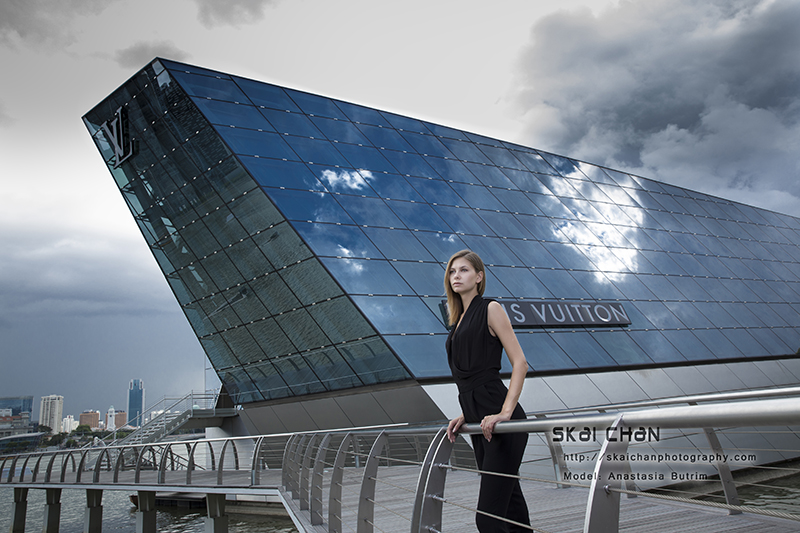
▲ Outdoor off-camera flash photography taken at the same spot. The reflection/detail on the building is being shown. The entire photoshoot was done within the same area and thus there was sufficient time to set up professional lighting.
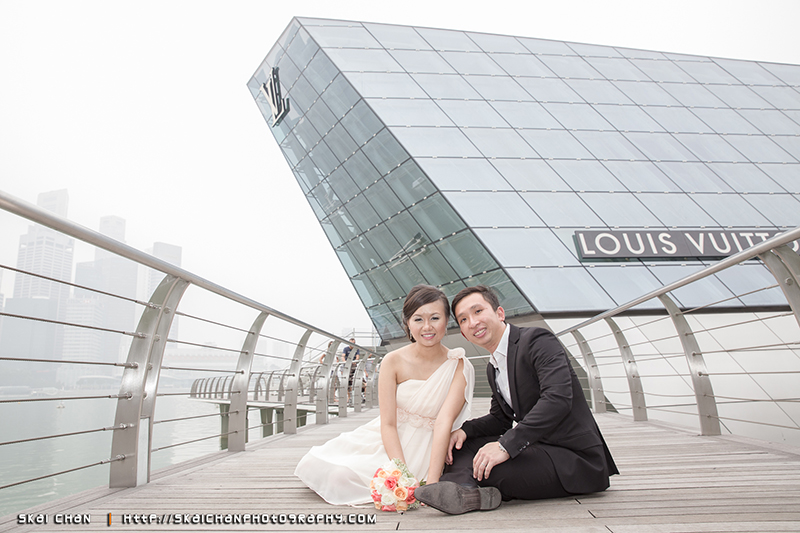
▲ Outdoor on-camera photography to fill up the shadow on the models' faces. The background/building looks pleasing. If done without the fill light, the background would remain the same but the models' faces would be much darker, especially around the eyes. This photoshoot required travelling over a great distance in a very short span of time and thus we couldn't set up off-camera lighting with a large softbox.
(This picture was taken on a hazy day though)
Flash photography (high-end photography), though it may seem mysterious, is a simple yet powerful tool used by professional photographers to create captivating effects, even during the daytime.
In challenging lighting conditions, like dim interiors or at night, the flash becomes a hero, ensuring your subjects look stunning, no matter the darkness around them.
But flash photography isn't limited to dark situations. Even in broad daylight, it adds a touch of magic. Professional photographers use it creatively to craft different effects. With controlled bursts of light, you can add drama, soften shadows or make your subject pop against the background.
Here's the thing - all photographers can shoot with natural light but not everyone owns flash equipment. And even among those who do, executing flash well requires skill and practice. It's an art in itself, mastering the timing and intensity of the flash to create striking images.
Embrace the magic of flash photography and you'll discover a world of creative possibilities. Let your images shine with brilliance and evoke emotions that resonate with your audience, whether it's day or night. With dedication and practice, you can wield flash like a pro and unlock its full potential in your photography journey.
Soft Light VS Hard Light
Lighting is a pivotal element in photography and it comes in two primary types: soft light and hard light. Both types play a crucial role in shaping the mood, emotions and overall aesthetics of a photograph.
To grasp the distinction between soft and hard light, consider the experience of taking a selfie in two different lighting scenarios: on a cloudy day just before sunset (soft light) and on a cloudless day at noontime (hard light).
Soft light refers to a gentle, diffused illumination that creates soft shadows and a gradual transition between light and dark areas. Imagine a cloudy day just before sunset when the sun is hidden behind the clouds. This natural soft light gently caresses the subject's features, producing a flattering and ethereal effect. Soft light is renowned for its ability to smoothen textures and render a sense of warmth and serenity to the photograph. It is like nature's own beauty filter, making it a popular choice for portraits and dreamy outdoor scenes.
On the other hand, hard light emanates from a direct, unobstructed source, like the sun on a cloudless day at noontime. The intense and focused beams of hard light create sharp, well-defined shadows, resulting in high-contrast images. This lighting type can be both dramatic and challenging, as it reveals fine details and textures, but may also accentuate imperfections or harshly highlight certain features. Hard light is akin to a spotlight, emphasising subjects with bold contrasts and vibrant colours. It is often employed in outdoor sports photography and architectural shots to create striking shapes and angles.
In photography, the choice between soft and hard light is critical for shaping the desired mood and message of the image. Soft light can evoke a sense of intimacy, gentleness and nostalgia, making it ideal for capturing emotions and tender moments. On the other hand, hard light adds impact, drama and boldness to a scene, making it suitable for emphasising strong emotions, architectural details and vibrant colours.
By understanding the distinction between soft and hard light and when to utilise each, photographers can masterfully harness the power of light to create captivating and evocative photographs that resonate with viewers on a deeper level. Whether capturing a soft, romantic portrait or an intense, dramatic landscape, the choice of light can transform an ordinary moment into visually compelling and emotionally captivating art.
Flash VS Natural Light Photography
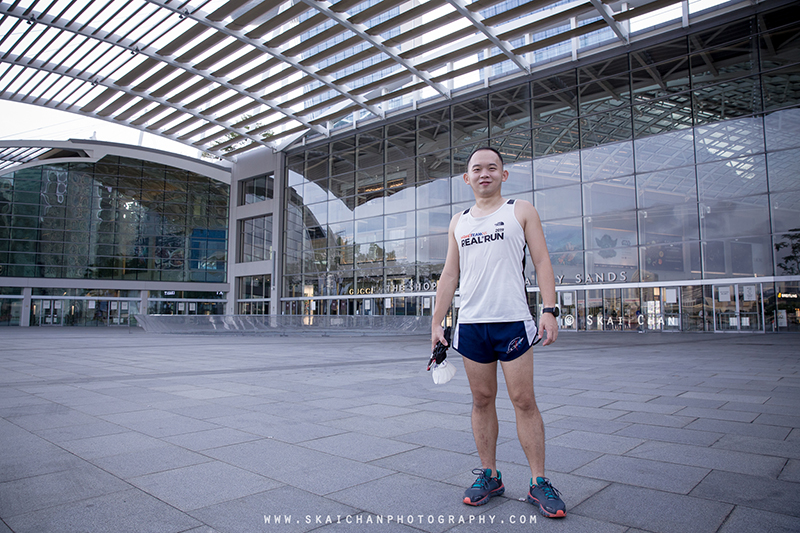
Above: Photography using natural light on a cloudy day.
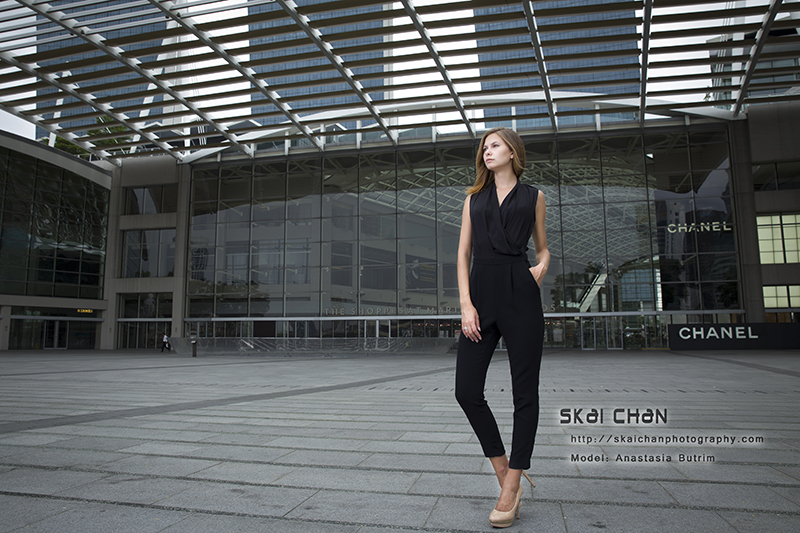
Above: Photography using off-camera flash on a cloudy day.
The direction of the light can be controlled and the background can be dimmed to focus on the subject and create a more dramatic look.
Table of Comparison
Given the same conditions, the two types of shoots are compared and the winner is given a point for each item below.
| Items / Type of shoot | Flash | Natural light | |
|---|---|---|---|
| 1 | Consistency | 1 | |
| 2 | Model's creativity | 1 | |
| 3 | Creative effect | 1 | |
| 4 | Time | 1 | |
| 5 | Quantity of photos | 1 | |
| 6 | Quality of photos | 1 | |
| 7 | Variety of Photos | 1 | |
| 8 | Mobility | 1 | |
| 9 | Permit | 1 | |
| 10 | Comfort level | 1 | |
| 11 | Angle/ Direction | 1 | |
| 12 | Background details | 1 | |
| 13 | Uniqueness | 1 | |
| 14 | Sharpness | 1 | |
| 15 | Cost | 1 | |
| Total | 7 | 8 |
Detailed Pros & Cons
-
Consistency
Flash Photography (advantage)
Since the quality and quantity of the light produced by professional lighting can be kept constant, the quality of photographs will be more consistent. Using professional lighting as the main light can reduce the harshness of the sunlight. Of course, professional light has its limitation when shooting under a cloudless sky with strong sunlight.
Natural Light Photography
Since the quality and quantity of sunlight can change within seconds due to the movement of clouds, the quality of light can be changed as well. Shooting both under open shade and directly under the sun will make the photographs in that album look very different due to the quality of light.
-
Model's creativity
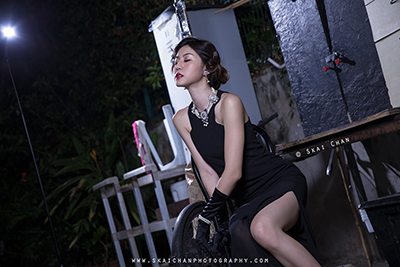
Above: Professional light (high-end) photography. The model was creative, however, being restricted a lot to the professional lighting's position. For every new spot we wanted to shift over to, we needed to move and test the lighting again. At times, the lighting would need to be redesigned.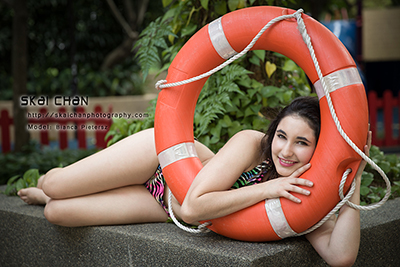
Above: Natural light photography. The photoshoot was done using only natural light because of the uncertainty of whether professional photography was allowed. The model was able to roam around more freely during the shoot, given the natural light of that spot was good enough.
Flash Photography
When using flash photography, models may find it slightly more challenging to move around freely due to the setup of lighting equipment. The presence of flash units or off-camera strobes requires some coordination and adjustment to avoid obstructing the model's movement. However, with practice and experience, photographers can still create a comfortable and accommodating atmosphere for the models.
Natural Light Photography (advantage)
Natural light photography allows models to move around with ease and spontaneity. The absence of complex lighting setups enables a more fluid and relaxed shooting experience, encouraging models to express themselves naturally. This unrestricted mobility often fosters a sense of authenticity and organic interactions between the photographer and the subject.
-
Creative effect
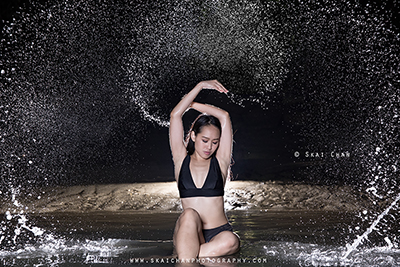
Above: Night creative conceptual photography using professional lighting to light up the model's face and display the water effect.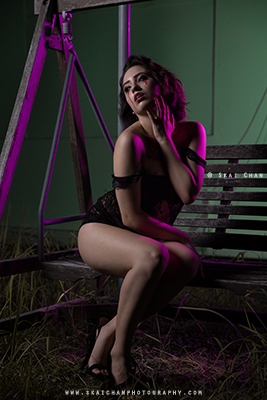
Above: Halloween conceptual photography using different colours of lighting.

Above: Art conceptual photography using very directional light to outline the model.
Flash Photography (advantage)
Flash opens up a realm of creative possibilities by allowing photographers to control and shape light precisely. By adjusting the direction, intensity and colour temperature of the flash, photographers can craft diverse and captivating lighting effects. From achieving dramatic shadows to highlighting specific elements, flash adds a dynamic and artistic flair to the images, enhancing their visual impact.
Natural Light Photography
While natural light offers its captivating charm, it may not provide the same level of versatility and control as flash. The lighting effect in natural light photography is more influenced by the positioning of the sun and the surrounding environment. This limitation may restrict the variety of creative effects that can be achieved solely through natural light.
-
Time
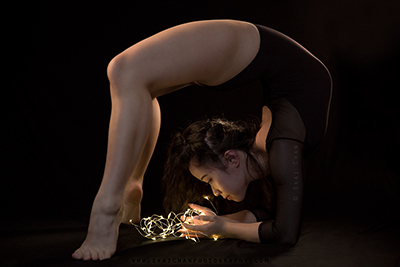
Above: Studio dance photography using professional lighting. The set-up of the studio and lighting took over an hour. The model had to wait for the testing of each light to get the correct exposure.
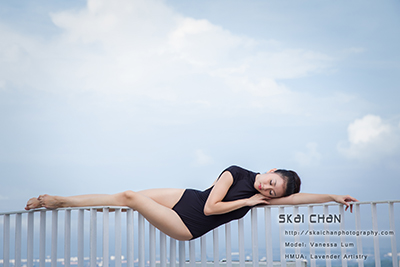
Above: Outdoor dance photography using natural lighting. Since no lighting equipment was used, the pace of the shoot was faster. However, we did have to wait for the right time for the good light.
Flash Photography
Flash photography typically demands more time for setup and testing. Properly positioning and configuring the flash units or strobes to achieve the desired lighting effect may require careful adjustments and multiple test shots. This additional time investment may slow down the overall pace of the photoshoot.
Natural Light Photography (advantage)
Natural light photography benefits from immediate availability. As long as there is daylight, photographers can commence shooting without the need for complex setups. The simplicity of natural light allows for a quicker and more spontaneous workflow, especially in situations where time is limited. -
Quantity of photos
Flash Photography
The setup and testing required for flash photography may reduce the number of photos taken within a specific timeframe. The additional time spent fine-tuning lighting conditions can limit the number of shots captured during a single session.
Natural Light Photography (advantage)
The ease and immediacy of shooting with natural light facilitate a higher quantity of photos within a shorter period. Photographers can take advantage of changing lighting conditions and quickly adapt to different scenes, leading to a larger volume of images in a given timeframe.
-
Quality of photos
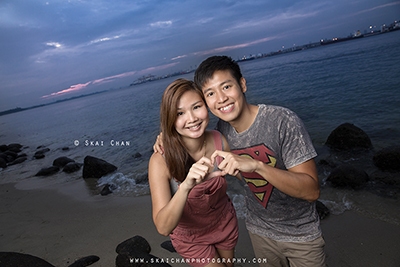
Above: High-End couple photoshoot with professional light.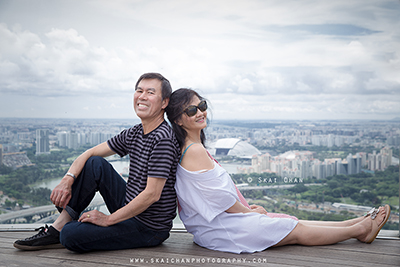
Above: Casual couple photoshoot with natural light. Flash Photography (advantage)
Flash photography can yield photos with a polished and professional appearance. The controlled lighting and precise exposure create consistent and flattering results, particularly in challenging lighting conditions. Large softboxes can be used to produce very soft light, hence making the model's complexion look better to suit most types of photoshoots. Shooting with professional lighting would usually give a professional feel to the quality of the photographs.
Natural Light Photography
While natural light imparts a distinct charm to photographs, the lack of controlled lighting may lead to variable outcomes in image quality. Depending on the lighting conditions, natural light photography may exhibit diverse characteristics, from soft and ethereal to vivid and dynamic visuals. The quality of light is subjected to ambient light, such as the sun or the lamps available. There are also situations that the ambient light isn't strong enough, the photographer may have to increase the ISO to compensate for it, which adds noise to the photographs and causes a reduction of dynamic range. Many people do mistake quantity as quality of light: under the bright sun where there's a lot of light, there's likely to be more harsh shadows appearing on the face, which is unflattering.
-
Variety of Photos
Flash Photography
The stationary nature of flash setups may restrict the variety of backgrounds and compositions during a single session. Relocating or adjusting flash equipment to accommodate different settings might take additional time and effort.
Natural Light Photography (advantage)
Natural light photography offers greater flexibility to explore various locations and backgrounds seamlessly. Photographers can easily move between different settings, enabling a broader range of diverse shots and visual storytelling.
-
Mobility
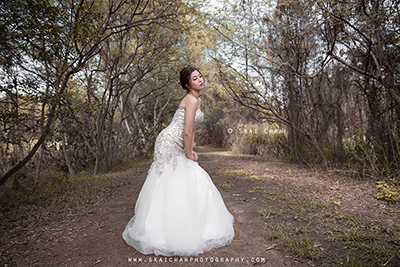
Above: High-End bridal photography with professional light. The heavy and bulky equipment restrained our movements and prevented us from further exploring the location.
Above: Hiking photography with natural light. It requires climbing and walking a long distance and hence has to keep to the minimum equipment (probably, just a DSLR).
Flash Photography
The equipment used in flash photography, such as flash units and light modifiers, can be heavy. Once set up, the flash equipment may limit the mobility of the photography team, making it less convenient to move between different shooting spots.
Natural Light Photography (advantage)
Shooting with natural light allows for greater mobility, as photographers can move freely without being tethered to additional equipment. This freedom of movement enables the photography team to explore different locations and compositions effortlessly.
-
Permit
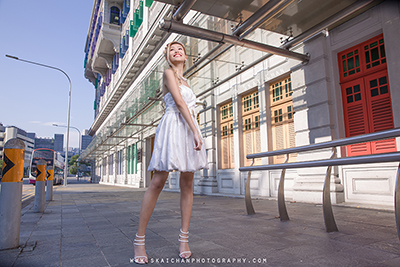
Above: High-End outdoor portrait photography using professional lighting. The quality and direction of the natural light were bad. Using professional lighting helped to make the model look more flattered and also eye-catchy. However, we were eventually chased off by the security guard at the last location.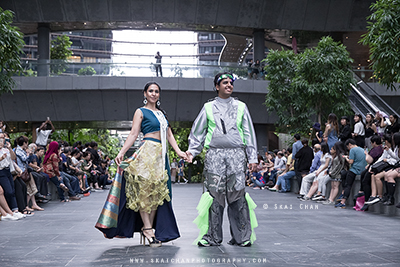
Above: Outdoor runway photography using natural lighting. I wasn't sure if the organiser had sought permission from the building's management for me to set up any external lighting (professional lighting). However, we were lucky that the natural light at that spot was great.
Flash Photography
Flash photography, especially with professional lighting setups, may be perceived as more commercial and intrusive by management or security personnel in certain locations. As a result, some places may require photographers to obtain permits or seek permission before conducting flash photography.
Natural Light Photography (advantage)
Using natural light usually involves less equipment and is generally considered less obtrusive. Many locations do not require specific permits for natural light photography, making it more accessible for spontaneous and on-the-go shooting.
-
Comfort level
Flash Photography
The setup and use of flash equipment may attract more attention from passers-by, potentially making the subject and the photography team feel self-conscious or uneasy during the shoot.
Natural Light Photography (advantage)
Most people are more accustomed to being photographed in natural light settings, leading to a higher level of comfort and ease during the photography session.
-
Angle/ Direction
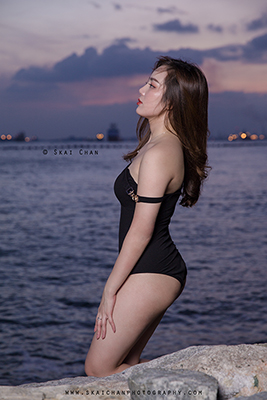
Above: Professional lighting was used to light up the model's face against the sun during sunset - backlighting.
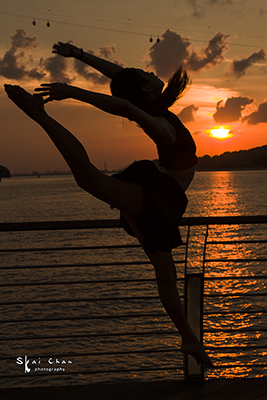
Above: The main light (natural light) was from the sun and thus we can only create a silhouette effect at such an angle using natural light.
Flash Photography (advantage)
Flash photography enables photographers to overcome the limitations of natural light angles. When dealing with backlit situations or challenging lighting directions, flash can fill in the shadows and provide more flexibility in capturing various angles.
Natural Light Photography
The direction of sunlight can sometimes limit the range of shooting angles, especially in situations where the sun is in a specific position or when dealing with backlighting scenarios.
-
Background details

Above: Beach photography with professional lighting. The details of the sky were retained by dimming down the entire natural light. The model was then lighted up by professional lighting.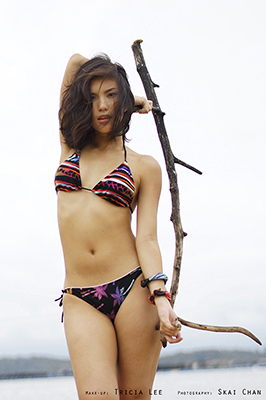
Above: Beach photography with natural lighting. The details of the sky were lost because it was much brighter. Photoshop work may be able to retrieve some details but with limitations.
Flash Photography (advantage)
Using flash allows photographers to balance the exposure between the subject and the background more effectively. This results in well-detailed backgrounds, including the sky, enhancing the overall visual impact of the photograph.
Natural Light Photography
While natural light can produce beautiful background details, achieving a perfect balance between the subject and background may be more challenging. In certain lighting conditions, natural light may lead to overexposure of the background or underexposure of the subject, affecting the overall image quality.
-
Uniqueness
Flash Photography (advantage)
Flash photography offers the opportunity to create more special effects and unique visuals. By employing creative lighting techniques, photographers can craft images that stand out and leave a lasting impression on viewers. Additionally, since many camera owners do not frequently use flash, flash photography presents a distinctive and less common approach, contributing to the uniqueness of the resulting images.
Natural Light Photography
While natural light photography has its charm, the prevalence of using available light might result in more common and familiar imagery. The distinctive and artistic effects achievable through flash photography make it an avenue for photographers to differentiate their work and produce more visually intriguing photographs.
-
Sharpness
Flash Photography (advantage)
Flash's ability to freeze motion enables photographers to capture sharp images, particularly in low-light situations or when dealing with fast-moving subjects. The instantaneous burst of light effectively reduces motion blur, resulting in clear and crisp photographs.
Natural Light Photography
In low-light conditions or with subjects in motion, natural light photography may lead to a higher likelihood of motion blur, resulting in less sharpness and clarity in the final images.
-
Cost
Flash Photography
Flash photography typically involves higher costs compared to natural light photography. The additional expenses arise from the need to invest in professional lighting equipment, including flash units, light modifiers and other accessories. Acquiring high-quality flash gear can be a significant financial commitment for photographers, especially those starting or working on a limited budget.
Natural Light Photography (advantage)
Using natural light incurs minimal costs since it relies on available light sources such as the sun. There is no need to invest in specialised lighting equipment, making it a more budget-friendly option for photographers, particularly beginners or those looking for cost-effective solutions.
Skai's Approach to Lighting in Photography
My approach to lighting in photography revolves around prioritising the visibility and beauty of the model's face while maintaining the highest possible quality of photographs. I achieve this by primarily relying on off-camera flash photography, which allows me to precisely control and shape the light. Through this method, I can illuminate the model, creating a pleasing contrast against the background and ensuring they stand out in the composition.
The proper lighting of faces, along with shaping and contrasting them against the background, often necessitates the use of professional lighting equipment. This entails working with heavy and bulky gear, which requires time and effort to set up and dismantle. Once the equipment is in place, it becomes less mobile, making it challenging to move around freely during the shoot. Consequently, when opting for professional lighting, I recommend having at least a photographer assistant to manage the equipment and be prepared for a lower quantity of photographs and fewer locations. Educating clients about these aspects is crucial in managing their expectations.
However, I understand that some situations may not allow for the use of professional lighting or clients may prefer a more natural look. In such cases, I turn to natural light as my lighting source, primarily depending on sunlight. For certain projects, like dating profile photography, I strive to achieve a professional look while maintaining a level of authenticity that does not immediately reveal the work of a professional photographer. In these instances, natural light becomes an ideal choice as it imparts a more organic and approachable feel to the photographs.
Balancing between off-camera flash photography and natural light allows me to tailor my approach to the specific requirements of each project and the preferences of my clients. The versatility in lighting techniques ensures that I can consistently deliver high-quality and meaningful photographs that resonate with the intended audience, capturing the essence and beauty of every subject I have the privilege to photograph.
Skai's Take on Flash Photography
I've encountered my fair share of intriguing situations during photoshoots. One such curious incident revolves around a model's peculiar request to abandon my trusty professional lighting in favour of natural light, aka sunlight. Surprisingly, I've noticed other models dropping hints in a similar direction, expressing a preference for the simplicity of natural light. In this era of DSLR, owners turned photographers and a myriad of hobbyist snappers, many individuals have grown accustomed to the world of "modelling" without the use of professional lighting.
To make matters even more perplexing, some models have posed the question, wondering why I opt for professional lighting over the more common natural light used by other photographers. Ah, if only it were that simple! You see, my ultimate goal is to craft the best and most distinctive photographs imaginable. I strive to create captivating images that stand out from the crowd, ones that tell a story and leave a lasting impression on anyone who beholds them.
While natural light indeed has its allure, there's a world of creative possibilities that open up with the use of professional lighting. It grants me the power to control and shape light, moulding it into mesmerising patterns and striking contrasts. Each photoshoot is an opportunity to unveil a unique masterpiece, capturing the essence of the subject with an artistic flair that sets my work apart.
Though navigating these curious requests can be challenging, I stand firm in my commitment to producing exceptional and exceptional-only work. As a dedicated photographer, I believe in the magic of professional lighting and I'll continue to embrace it wholeheartedly, forging images that showcase the true beauty and individuality of each moment, each model, and each story I have the honour to capture. So, as the journey through flash photography continues, I'll keep illuminating the world, one unforgettable photograph at a time.
When to Use Natural Light Photography
- Client's Preference for Natural Light Photography:
If the client prefers a more natural and unobtrusive approach, I respect her choice and use natural light. Reasons for this preference may include the client's shyness, a desire to avoid drawing attention with large lighting equipment or a personal admiration for the beauty of natural light. Additionally, budget constraints might lead to choosing natural light photography.
- Venue Restrictions on Professional Shoots:
In venues where professional shoots are not permitted, I solely rely on natural light photography. Many locations allow only non-intrusive photography without elaborate lighting setups, making natural light a suitable and practical choice.
- Venues with Limited Accessibility:
For locations that require extensive travelling or involve climbing on foot, the use of heavy lighting equipment becomes impractical. In such situations, natural light photography becomes the ideal option, allowing for greater mobility and ease of movement.
- Short Shooting Duration with Limited Setup Time:
In time-sensitive scenarios where there is not enough time for elaborate lighting setups, I rely on natural light photography. The immediacy of natural light enables me to swiftly capture the desired shots without sacrificing the quality of the images.
- Projects like Dating Profile Photography:
For dating profile photography, I opt for natural light to achieve a professional yet authentic look. Natural light imparts a genuine and approachable feel to the photographs, creating a connection with the viewer without revealing the presence of professional lighting equipment.
- Overseas Shoots with Limited Luggage Capacity:
During overseas shoots, where luggage space is restricted, carrying bulky and heavy lighting equipment can be challenging. Opting for natural light photography allows me to keep my gear lightweight and portable, making the travel experience more manageable.
By adapting my approach to natural light in these situations, I ensure that every photography project receives the utmost care and attention to detail, resulting in stunning and meaningful photographs that meet the unique needs and preferences of each client and location.
Conclusion
In conclusion, the significance of lighting in photography cannot be understated. The comparison between natural light and flash photography has shed light on their unique characteristics, advantages and limitations. While natural light brings a soft and organic charm to images, flash photography offers precise control and creative possibilities. Both approaches have their place in the photographer's toolkit and understanding their nuances empowers photographers to create stunning visuals that resonate with their audience.
Aspiring photographers, I encourage you to embrace the versatility of both natural light and flash. Each lighting technique opens doors to diverse storytelling and creative expression. The interplay between light and shadow can evoke emotions, accentuate details and convey powerful messages. By deftly wielding the power of light, you can craft images that leave a lasting impact, ones that touch hearts and inspire minds.
For those seeking photography sessions, I am here to cater to your vision and needs. Whether you desire the enchanting allure of natural light or the controlled brilliance of professional flash photography, my expertise in both areas ensures that your moments are captured with utmost care and artistry. I am passionate about delivering high-quality and meaningful work that reflects your unique story and personality.
Together, let us embark on a journey of visual storytelling, where light becomes our brush and the canvas comes alive with breathtaking imagery. Let us create memories that stand the test of time and evoke emotions for generations to come. Get in touch today and let us embark on an unforgettable photography experience that will illuminate your world like never before.
please show some appreciation by following me in Facebook and Instagram.
Do check out my other useful photography tips!
Trust, clarity, and respect—capturing your story with care.
Contact Skai
Updated: Sun, 05 October 2025
 Scan QR to visit this website
Scan QR to visit this website